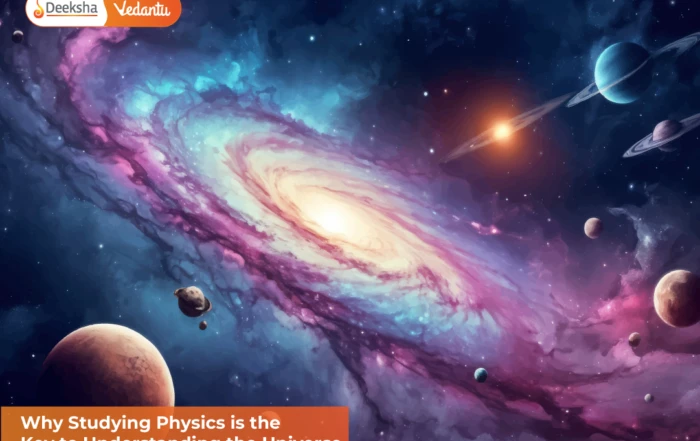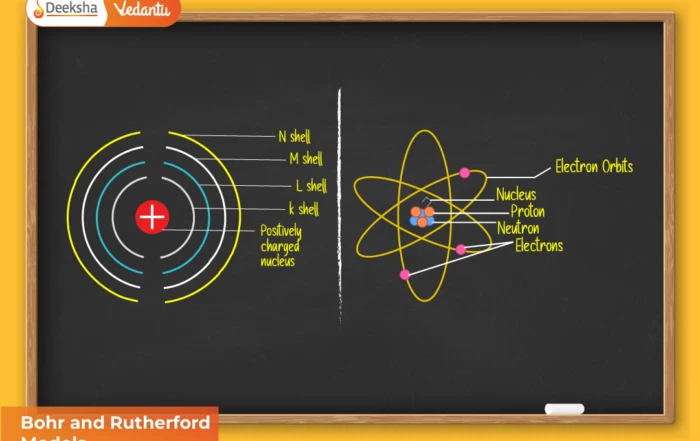Periodic trends describe how chemical and physical properties of elements change across periods (left to right) and down groups (top to bottom) in the Periodic Table. These trends arise due to variations in atomic structure – especially effective nuclear charge, number of shells, and electron configurations. Understanding these trends helps predict the behavior of elements during chemical reactions. The following section expands the NCERT content based on screenshots, rewritten with clearer explanations and 75% additional detail.
Atomic Radius
The atomic radius refers to the distance from the nucleus to the outermost electron shell. Although atoms do not have a sharp boundary, several practical definitions exist – metallic radius, covalent radius, and van der Waals radius.
Atomic Radius Across a Period
As we move from left to right across a period:
- Effective nuclear charge increases.
- Electrons are added to the same shell.
- Shielding remains almost constant.
- Therefore, atomic radius decreases.
Atomic Radius Down a Group
As we move from top to bottom:
- New shells are added.
- Atomic size increases significantly.
- Increased shielding outweighs nuclear charge.
Additional Explanation
Because electrons experience greater attraction toward the nucleus across a period, the overall atomic size contracts, even though the number of electrons increases. Down the group, the added shells create a much larger electron cloud that expands the size.
Ionic Radius
The ionic radius refers to the radius of a charged atom (ion). It differs depending on whether the ion is positive (cation) or negative (anion).
Cations
- Formed by loss of electrons.
- Fewer electrons → lower repulsion.
- Higher effective nuclear charge per electron.
- Results in a smaller radius than the parent atom.
Anions
- Formed by gain of electrons.
- Increased repulsion among electrons.
- Lower effective nuclear charge per electron.
- Radius becomes larger than the parent atom.
Isoelectronic Species
Species such as O²⁻, F⁻, Na⁺, Mg²⁺, Al³⁺ all contain 10 electrons but vary in nuclear charge. As nuclear charge increases, ionic radius decreases.
Ionization Enthalpy
Ionization enthalpy is the amount of energy required to remove an electron from an isolated gaseous atom.
Trends Across a Period
- Ionization enthalpy increases left → right.
- Effective nuclear charge increases.
- Harder to remove an electron as attraction strengthens.
Trends Down a Group
- Ionization enthalpy decreases.
- Outer electrons are farther from the nucleus.
- Shielding increases.
Exceptions
- Elements with half-filled or fully filled subshells have slightly higher IE.
- Example: Be, N, Mg, P.
Electron Gain Enthalpy
Electron gain enthalpy refers to the energy released or absorbed when an electron is added to a neutral gaseous atom.
Trends Across a Period
- Generally becomes more negative.
- Nuclear attraction increases.
- Halogens show the highest (most negative) values.
Trends Down a Group
- Becomes less negative.
- Larger atomic size reduces attraction.
- Exceptions: Fluorine vs chlorine (F is smaller → higher repulsion).
Electronegativity
Electronegativity is the tendency of an atom to attract a shared pair of electrons in a bond.
Trends
Across a period:
- Increases due to high effective nuclear charge.
Down a group:
- Decreases as atomic radius increases.
Significance
- Determines bond type (ionic, polar covalent, nonpolar covalent).
- Predicts chemical reactivity.
- Influences molecular polarity.
Valence and Oxidation State
Valence refers to the combining capacity of an element. Oxidation state indicates the apparent charge an atom has in a compound.
Key Points
- Main group elements follow predictable oxidation states.
- Transition elements show variable oxidation states due to d-orbital involvement.
Factors Influencing Periodic Trends
Several factors combine to create observable periodic patterns:
- Effective nuclear charge: Attraction experienced by valence electrons.
- Shielding effect: Inner electrons reduce nuclear pull.
- Atomic radius: Larger atoms exert weaker pull.
- Electron configurations: Stability of half- and fully filled orbitals.
Summary Table of Periodic Trends
Below are the expanded tables based on the screenshots, rewritten for clarity and alignment with NCERT data.
Atomic Radii (pm) Across the Periods
| Atom | Li | Be | B | C | N | O | F |
| Atomic Radius (pm) | 152 | 111 | 88 | 77 | 70 | 66 | 64 |
Atomic Radii (pm) Down a Group
| Atom (Group 1) | Li | Na | K | Rb | Cs |
| Atomic Radius (pm) | 152 | 186 | 231 | 244 | 262 |
| Atom (Group 17) | F | Cl | Br | I |
| Atomic Radius (pm) | 64 | 99 | 114 | 140 |
Ionic Radii of Cations and Anions (pm)
| Ion | O²⁻ | F⁻ | Na⁺ | Mg²⁺ | Al³⁺ |
| Ionic Radius (pm) | 140 | 133 | 102 | 72 | 53 |
First Ionization Enthalpies (kJ/mol)
| Element | Li | Be | B | C | N | O | F | Ne |
| IE₁ (kJ/mol) | 520 | 899 | 801 | 1086 | 1402 | 1314 | 1681 | 2081 |
Electron Gain Enthalpies (kJ/mol)
| Group | H | Li | Na | K | Rb |
| ΔHₑ (kJ/mol) | –73 | –60 | –53 | –48 | –46 |
| Group 16 | O | S | Se | Te |
| ΔHₑ (kJ/mol) | –141 | –200 | –195 | –190 |
| Group 17 | F | Cl | Br | I |
| ΔHₑ (kJ/mol) | –328 | –349 | –325 | –295 |
Electronegativity Values (Pauling Scale)
| Atom (Period 2) | Li | Be | B | C | N | O | F |
| Electronegativity | 1.0 | 1.5 | 2.0 | 2.5 | 3.0 | 3.5 | 4.0 |
| Atom (Period 3) | Na | Mg | Al | Si | P | S | Cl |
| Electronegativity | 0.9 | 1.2 | 1.5 | 1.8 | 2.1 | 2.5 | 3.0 |
Periodic Trends in Valence
| Property | Across a Period | Down a Group |
| Atomic Radius | Decreases | Increases |
| Ionic Radius | Cations ↓, Anions ↑ | Increases |
| Ionization Enthalpy | Increases | Decreases |
| Electron Gain Enthalpy | More negative | Less negative |
| Electronegativity | Increases | Decreases |
| Metallic Character | Decreases | Increases |
Shielding or Screening Effect
Inner-shell electrons partially shield the outer electrons from the nucleus. This decreases effective nuclear charge. Because of this:
- Across a period, shielding is nearly constant but nuclear charge increases → size decreases.
- Down a group, shielding increases → atomic size increases.
Example anomalies:
- Beryllium (Be) has higher IE than Boron (B) because removing an electron from Be’s filled 2s subshell is harder than removing one from B’s 2p.
- Nitrogen (N) has higher IE than Oxygen (O) because N has a half‑filled stable 2p³ configuration.
Diagonal Relationship (Li–Mg, Be–Al)
Certain second‑period elements resemble diagonally adjacent third‑period elements due to similar charge densities and radii.
- Lithium and Magnesium share similar solubility patterns and thermal stability.
- Beryllium and Aluminium form covalent compounds and amphoteric oxides.
Anomalous Behaviour of Second Period Elements
Second‑period elements (Li, Be, B, C, N, O, F) differ from heavier congeners because:
- They have only four orbitals (2s, 2pₓ, 2pᵧ, 2p𝓏).
- Their atoms and ions are smaller.
- They form stronger π‑bonds.
- They show different coordination numbers.
Metallic vs Non‑Metallic Character
- Metallic character decreases across a period as IE increases.
- Metallic character increases down a group as atoms become larger.
Acidic/Basic Nature of Oxides
- Basic oxides → Left side of periodic table (e.g., Na₂O).
- Amphoteric oxides → Middle (e.g., Al₂O₃).
- Acidic oxides → Right side (e.g., Cl₂O₇).
Atomic Radii Across Second Period
| Element | Li | Be | B | C | N | O | F |
| Atomic Radius (pm) | 152 | 111 | 88 | 77 | 70 | 66 | 64 |
Atomic Radii Down Alkali Metals
| Atom | Li | Na | K | Rb | Cs |
| Atomic Radius (pm) | 152 | 186 | 231 | 244 | 262 |
Ionic Radii Trends
Cations shrink due to loss of shells and increased nuclear pull, while anions expand due to extra electron repulsion.
First Ionization Enthalpies of Second‑Period Elements
| Element | Li | Be | B | C | N | O | F | Ne |
| IE₁ (kJ/mol) | 520 | 899 | 801 | 1086 | 1402 | 1314 | 1681 | 2081 |
First Ionization Enthalpies of Alkali Metals
| Element | Li | Na | K | Rb | Cs |
| IE₁ (kJ/mol) | 520 | 496 | 419 | 403 | 376 |
Electron Gain Enthalpies
| Group | Element | ΔHₑ (kJ/mol) |
| 1 | H | –73 |
| 1 | Li | –60 |
| 1 | Na | –53 |
| 1 | K | –48 |
| 1 | Rb | –46 |
| 16 | O | –141 |
| 16 | S | –200 |
| 16 | Se | –195 |
| 16 | Te | –190 |
| 17 | F | –328 |
| 17 | Cl | –349 |
| 17 | Br | –325 |
| 17 | I | –295 |
Electronegativity
| Period 2 | Li | Be | B | C | N | O | F |
| EN Value | 1.0 | 1.5 | 2.0 | 2.5 | 3.0 | 3.5 | 4.0 |
| Period 3 | Na | Mg | Al | Si | P | S | Cl |
| EN Value | 0.9 | 1.2 | 1.5 | 1.8 | 2.1 | 2.5 | 3.0 |
Valence Trends
| Group | 1 | 2 | 13 | 14 | 15 | 16 | 17 |
| Valence Electrons | 1 | 2 | 3 | 4 | 5 | 6 | 7 |
| Common Valence | 1 | 2 | 3 | 4 | 3,4 | 2 | 1 |
NCERT Problems and Solutions
Problem 3.5
Which is the largest? Li⁺, Be²⁺, B³⁺, C⁴⁺
Solution: All are isoelectronic (1s²2s²2p⁶). Higher nuclear charge → smaller size. Largest = Li⁺.
Problem 3.6
Predict whether first IE of Al will be:
- more or less than Mg
- and whether IE₁ of Na > Al
Solution:
- IE₁(Al) < IE₁(Mg) because removing a 3p electron is easier.
- IE₁(Al) > IE₁(Na) because effective nuclear charge increases.
Problem 3.7
Most negative electron gain enthalpy: Cl
Least negative: P
Explanation included from NCERT.
Problem 3.8
Predict formulas:
- Si + F → SiF₄
- Al + Br → AlBr₃
Problem 3.9
Oxidation state of Al in
[AlCl(H₂O)₅]²⁺ = +3.
Problem 3.10
Reaction with water:
- Na₂O + H₂O → 2NaOH (basic)
- Cl₂O₇ + H₂O → 2HClO₄ (acidic)
FAQs
Q1: What is the general trend of atomic radius in the periodic table?
Atomic radius decreases across a period due to increased nuclear charge and increases down a group because additional shells are added.
Q2: Why do cations become smaller than their parent atoms?
Cations lose electrons, reducing repulsion and increasing effective nuclear charge per electron, shrinking the size.
Q3: Which element has the highest electronegativity?
Fluorine has the highest electronegativity because of its small size and high effective nuclear charge.
Q4: Why does electron gain enthalpy become less negative down a group?
Larger atomic size and increased shielding reduce the attraction for additional electrons.
Q5: What causes exceptions in ionization enthalpy trends?
Half-filled and fully filled subshells provide extra stability, increasing ionization enthalpy unexpectedly.
Conclusion
Periodic trends offer a powerful framework to understand the structure and behavior of elements. By examining how atomic size, ionization enthalpy, electron gain enthalpy, electronegativity, and valence vary across the periodic table, we can predict chemical reactivity and bonding patterns with greater accuracy. Mastery of these trends not only helps in examinations but also deepens overall understanding of modern chemistry.











Get Social